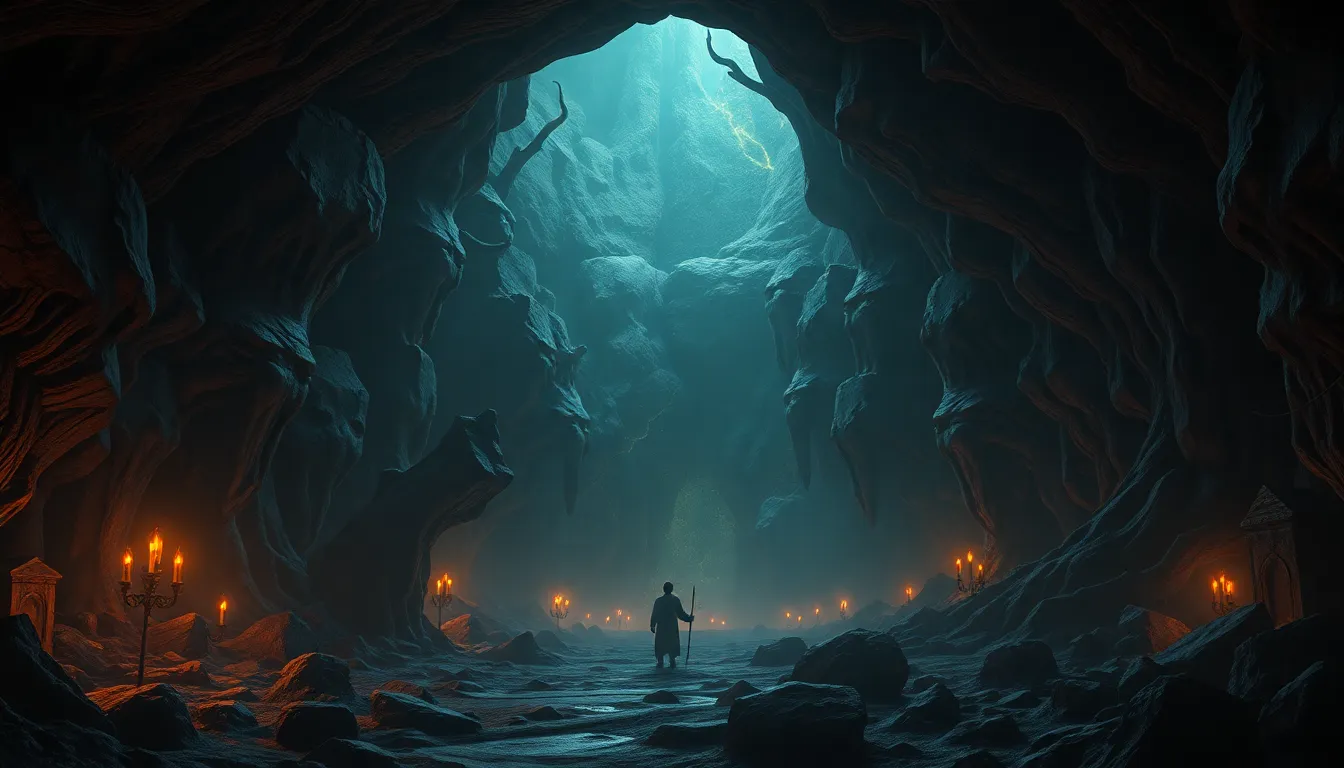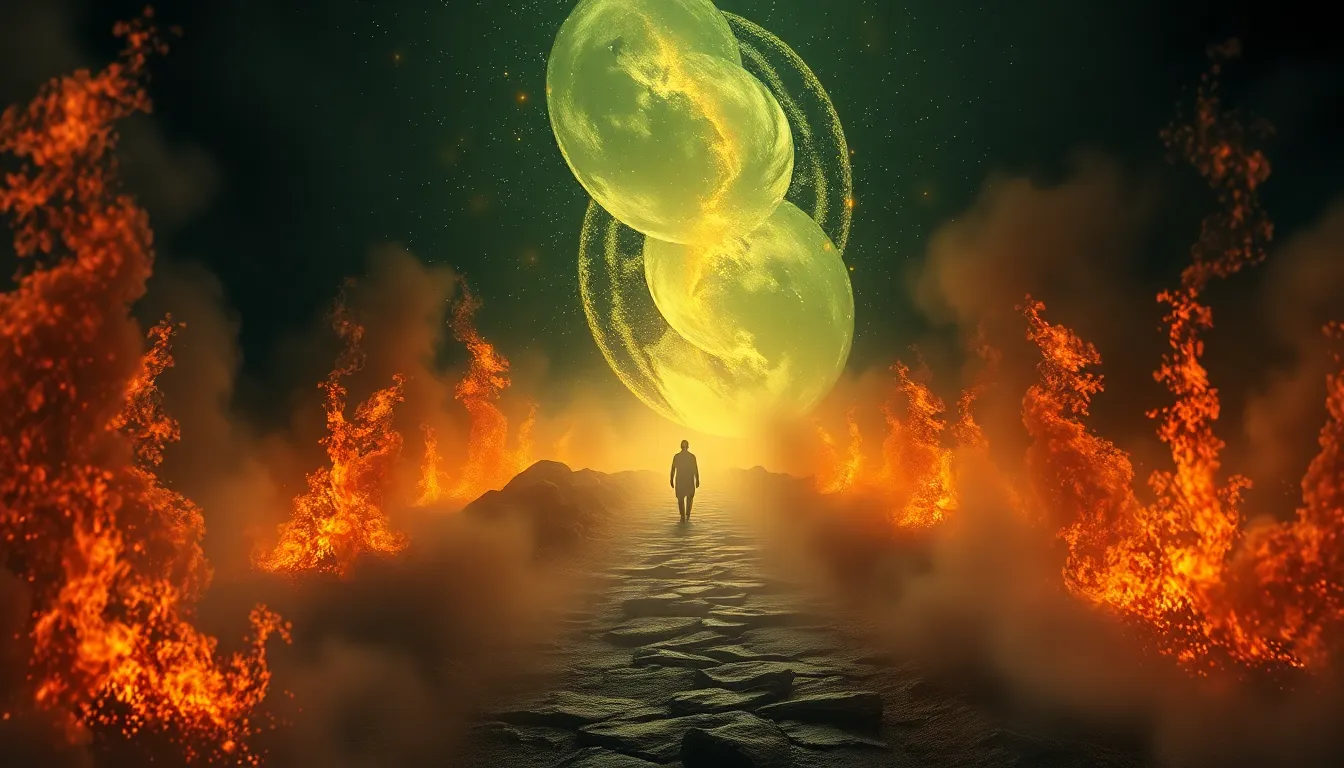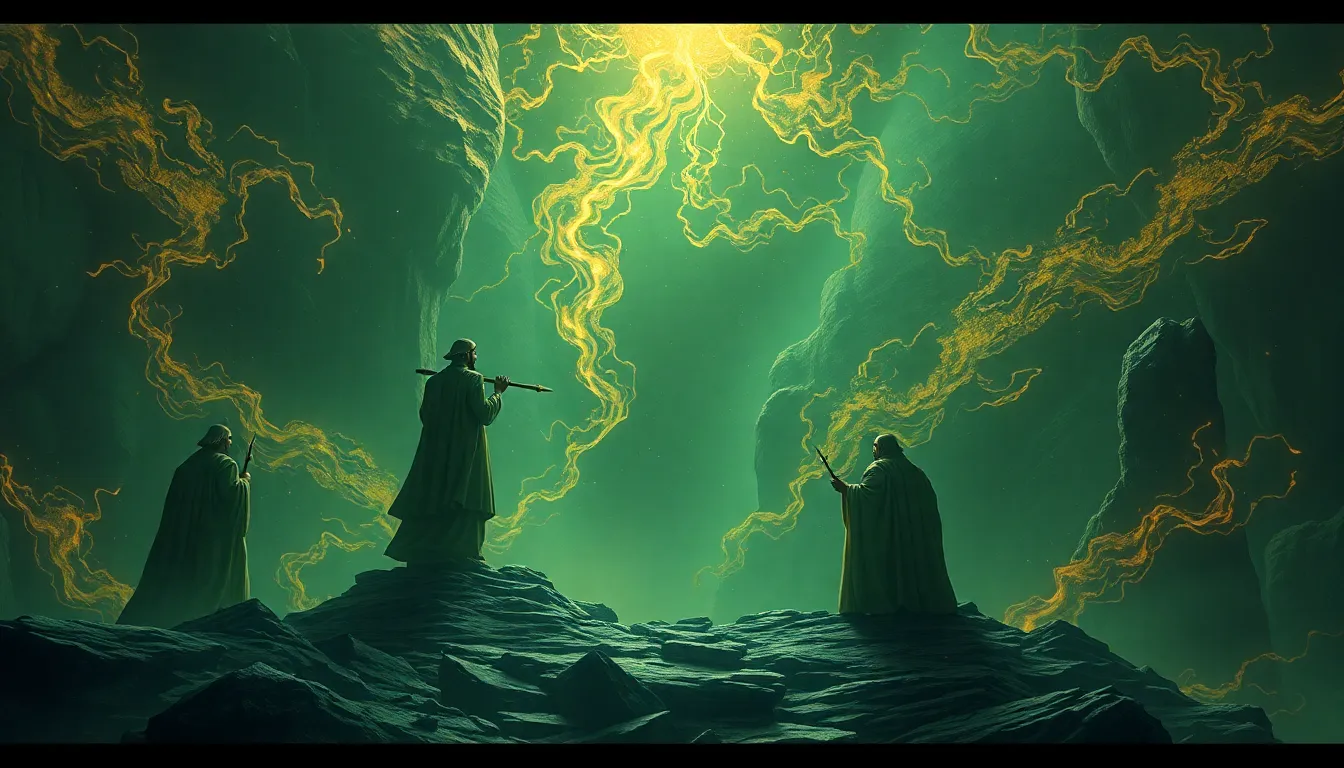The Underworld: A Mythical Exploration of Fear and Wonder
I. Introduction
The Underworld, a realm often depicted as a dark and mysterious place, plays a significant role in mythology across various cultures. It is frequently associated with the afterlife, where souls journey after death, facing trials and tribulations. This duality of fear and wonder encapsulates the human experience regarding mortality and the unknown.
The significance of the Underworld transcends mere storytelling; it reflects deep-seated beliefs about life, death, and the moral order of the universe. Cultures around the world have their unique interpretations and narratives concerning this shadowy domain, which evoke both dread and fascination.
Throughout this exploration, we will delve into the themes of fear and wonder associated with the Underworld, examining its historical perspectives, symbolism, representations in literature and art, psychological interpretations, and its presence in religion, folklore, and modern culture.
II. Historical Perspectives on the Underworld
A. Ancient civilizations and their views of the afterlife
Different ancient civilizations had distinct views of the Underworld, often reflecting their cultural values and beliefs.
- Mesopotamian beliefs: In ancient Mesopotamia, the Underworld was known as Kur, a dreary place where all souls ended up, regardless of their deeds in life. The afterlife was seen as a shadowy existence, devoid of joy.
- Egyptian mythology: The Egyptians had a more elaborate view of the afterlife, with the Underworld known as Duat, where the dead would face judgment by Osiris. Successful souls would enjoy eternal life in the Field of Reeds, while the wicked faced annihilation.
B. The Underworld in Greco-Roman mythology
In Greco-Roman mythology, the Underworld, often referred to as Hades, was ruled by the god Hades (or Pluto in Roman mythology). It was divided into different regions, including the Elysium Fields for the virtuous and Tartarus for the damned. This division highlighted the moral implications of one’s earthly life.
C. Eastern philosophies and the concept of the underworld
Eastern philosophies also present unique interpretations of the Underworld. In Hinduism, for instance, the Underworld (Patalaloka) is one of several realms where souls may reside based on their karma. Buddhism also speaks of various hells where beings experience suffering as a consequence of their actions.
III. Symbolism of the Underworld
A. The duality of fear and wonder
The Underworld embodies a duality of fear and wonder, representing both the dread of death and the awe of the mysteries beyond life. This duality encourages individuals to confront their fears and ponder the nature of existence.
B. The Underworld as a representation of the subconscious
Psychologically, the Underworld can symbolize the subconscious mind, where repressed thoughts and emotions reside. It serves as a metaphor for the inner struggles individuals face, often surfacing in dreams and artistic expressions.
C. Archetypes associated with the Underworld
Various archetypes are associated with the Underworld, such as:
- Chthonic deities: Gods and goddesses like Hades and Persephone who govern the Underworld.
- Guides: Figures like Charon, the ferryman who transports souls across the river Styx.
- Monsters: Creatures like Cerberus, representing the fearsome aspects of death and the afterlife.
IV. The Underworld in Literature and Art
A. Depictions of the Underworld in classical literature
Classical literature provides rich depictions of the Underworld:
- Homer’s “Odyssey”: Odysseus journeys to the Underworld to seek guidance from the prophet Tiresias, encountering lost souls and learning about the consequences of life choices.
- Virgil’s “Aeneid”: Aeneas descends into the Underworld to visit his father, showcasing a journey of revelation and legacy.
B. Artistic interpretations through the centuries
Art has long been fascinated with the theme of the Underworld, inspiring countless works from the Renaissance to modern times. Artists like Hieronymus Bosch and Gustave Doré have vividly depicted hellish landscapes, while modern interpretations often explore the theme through abstract or surreal expressions.
C. Modern literature and adaptations of the Underworld theme
Contemporary literature and media frequently draw on Underworld themes, reimagining ancient myths in new contexts. Books such as Neil Gaiman’s “American Gods” and Rick Riordan’s “Percy Jackson” series introduce the Underworld to younger audiences, blending mythology with modern storytelling.
V. Psychological Interpretations of the Underworld
A. Jungian perspectives on the Underworld as the shadow self
From a Jungian perspective, the Underworld symbolizes the shadow self—those parts of the psyche that individuals often hide or deny. Confronting the Underworld is akin to confronting one’s fears and repressed emotions, which is essential for personal growth.
B. The role of fear in confronting the unknown
The fear of the Underworld often reflects a broader fear of death and the unknown. This fear can be a catalyst for self-discovery, prompting individuals to confront their mortality and seek meaning in their lives.
C. The Underworld as a place of transformation and growth
Ultimately, the Underworld can be viewed as a transformative space. Characters in myths often emerge from their journeys into the Underworld changed, having gained wisdom and insight that enrich their lives.
VI. Folklore and the Underworld
A. Regional tales and myths surrounding the underworld
Folklore around the world features numerous tales of the Underworld, each reflecting local beliefs and customs. From the Irish Celtic tales of the Otherworld to the Inuit’s beliefs about the land of the dead, these stories emphasize the varied cultural narratives surrounding death.
B. Common motifs in folklore: journeys, trials, and guardians
Common motifs include:
- Journeys: Many tales involve heroes embarking on journeys to the Underworld, symbolizing a quest for knowledge or redemption.
- Trials: Characters often face challenges that test their character and resolve, mirroring life’s struggles.
- Guardians: Figures like the Grim Reaper or Cerberus serve as gatekeepers, emphasizing the finality of death and the transition to the afterlife.
C. The cultural significance of these stories in shaping societal values
These folklore narratives play a crucial role in shaping societal values, teaching lessons about morality, courage, and the human experience of death and loss.
VII. The Underworld in Religion and Spirituality
A. Concepts of hell and punishment across different faiths
Various religions have their interpretations of the Underworld, often characterized by concepts of punishment and reward. For example:
- Christianity: The concept of hell as a place of eternal punishment for the wicked contrasts with the idea of heaven for the righteous.
- Islam: In Islam, the afterlife involves a judgment day where souls are sent to either Jannah (paradise) or Jahannam (hell).
B. The role of the Underworld in spiritual journeys and rituals
Many spiritual practices incorporate the concept of the Underworld to symbolize inner transformation. Rituals may involve facing fears or seeking guidance from ancestors, reflecting the belief that the Underworld holds wisdom for the living.
C. Comparative analysis of afterlife beliefs
By comparing afterlife beliefs across different cultures, one can see both unique interpretations and common threads, such as the desire for justice, the fear of punishment, and the hope for reunion with loved ones.
VIII. The Underworld in Popular Culture
A. Film and television portrayals of the Underworld
Modern media has taken the Underworld theme and transformed it into compelling stories in film and television. Movies like “The Matrix” and “What Dreams May Come” explore



